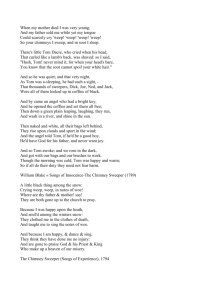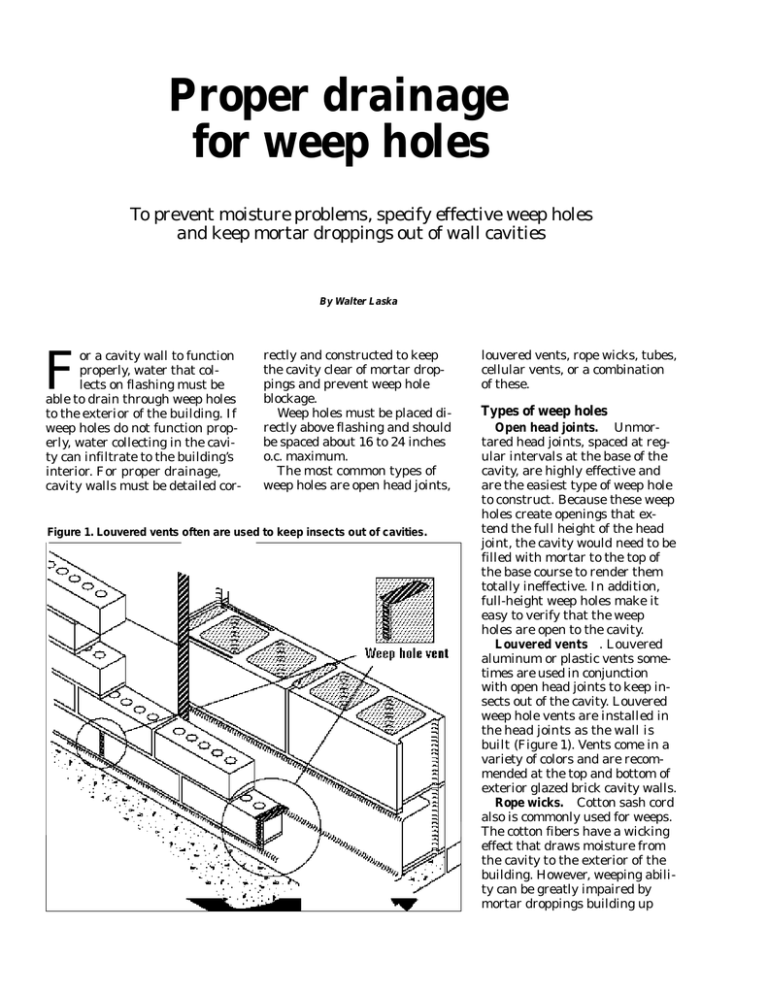
Proper drainage
for weep holes
To prevent moisture problems, specify effective weep holes
and keep mortar droppings out of wall cavities
By Walter Laska
F
or a cavity wall to function
properly, water that collects on flashing must be
able to drain through weep holes
to the exterior of the building. If
weep holes do not function properly, water collecting in the cavity can infiltrate to the building’s
interior. For proper drainage,
cavity walls must be detailed cor-
rectly and constructed to keep
the cavity clear of mortar droppings and prevent weep hole
blockage.
Weep holes must be placed directly above flashing and should
be spaced about 16 to 24 inches
o.c. maximum.
The most common types of
weep holes are open head joints,
Figure 1. Louvered vents often are used to keep insects out of cavities.
louvered vents, rope wicks, tubes,
cellular vents, or a combination
of these.
Types of weep holes
Open head joints. Unmortared head joints, spaced at regular intervals at the base of the
cavity, are highly effective and
are the easiest type of weep hole
to construct. Because these weep
holes create openings that extend the full height of the head
joint, the cavity would need to be
filled with mortar to the top of
the base course to render them
totally ineffective. In addition,
full-height weep holes make it
easy to verify that the weep
holes are open to the cavity.
Louvered vents . Louvered
aluminum or plastic vents sometimes are used in conjunction
with open head joints to keep insects out of the cavity. Louvered
weep hole vents are installed in
the head joints as the wall is
built (Figure 1). Vents come in a
variety of colors and are recommended at the top and bottom of
exterior glazed brick cavity walls.
Rope wicks. Cotton sash cord
also is commonly used for weeps.
The cotton fibers have a wicking
effect that draws moisture from
the cavity to the exterior of the
building. However, weeping ability can be greatly impaired by
mortar droppings building up
for moisture along the full height
of the head joint. The vents, which
are available in various sizes and
colors, are placed in the head
joints as the wall is constructed.
Keep the base mortar-free
Figure 2. This vent features a screened plastic tube into which cotton wicks
have been placed.
directly on the cord or rope, or by
salts left in the rope after the
evaporation of water.
Tubes. One-quarter-inch-diameter plastic or metal tubing,
cut slightly longer than the thickness of the wythe, is mortared in
place as the course immediately
above the flashing is laid. Such
weep holes are among the least
noticeable and least effective. Because of the small diameter of the
tubing, water is weeped out slowly and they can easily become
plugged with mortar droppings.
A new product, which combines
plastic tubing with cotton cord,
produces an effective weep hole.
The tube is capped at the outside
end with a screen and plugged
with cotton wicks at the inside end
(Figure 2). This type of weep is effective as long as the cotton wicks
are not covered with mortar.
Cellular vents. Plastic cellular vents consist of many small,
adjacent passageways bonded together in one unit. The cross section is similar to that of a honey-
comb (Figure 3). The cellular
composition provides easy drainage
Some cavity-wall details require several inches of pea gravel
in the base of the cavity to assure
that water drains to weep holes.
However, two problems exist.
First, if open head joints with
louvered vents are used, the pea
gravel can create an obstruction
where it butts up against the
vents. Second, excess mortar can
build up on top of the pea gravel
just as easily as it can at the base
of the cavity if pea gravel were
not used. In both cases, drainage
can be obstructed.
One way to minimize mortardropping buildup is to install
6- to 8-inch-wide sections of vinyl
or nylon mesh directly above
weep holes along the base course
(Figure 4). The mesh prevents
mortar from building up directly
on or behind the weep holes,
Figure 3. Plastic cellular vents resemble a honeycomb and come in various
sizes and colors.
droppings. This requires good
workmanship and construction.
First, the architect must specify a cavity with an airspace at
least 11⁄2 inches wide. This provides the mason ample space to
remove extruded mortar on the
inner surface of the wythe with
the tip of the trowel. To minimize
mortar extrusions, bevel the
mortar bed thin toward the cavity side (Figure 6). This technique was successfully used on
Chicago’s Harold Washington Library and Embassy Suites Hotel.
Beveling mortar this way can be
done easily by running the trowel
along the edge of the brick. It’s a
matter of replacing one mot i o n —f u rrowing the mortar—
with another.
Figure 4. Vinyl mesh can be placed directly above the base course to help
prevent mortar buildup in the cavity bottom.
while providing a path for water
drainage. However, to be effective, this method requires strict
quality control; if any of the mesh
sections are misplaced or deleted,
the detail is ineffective.
Another product is fabricated
of a nylon fiber mesh cut into a
unique, trapezoidal configuration.
The mesh is inserted in the airspace between the insulation and
brick, at the base of the walls
where weep holes exist. The mesh
is said to distribute mortar buildup
in a way that creates clear paths
for water to drain through weep
holes (Figure 5). The mesh is
claimed to be effective regardless
of the type of weep hole used.
Prevent mortar buildup
The best way to assure proper
drainage of water is to maintain
a cavity that is free of mortar
Figure 5. A new type
of nylon fiber mesh is
said to distribute
mortar buildup in a
way that creates clear
paths for water to
drain through weep
holes.
Figure 6. Beveling the
mortar bed away from
the cavity helps
prevent mortar
extrusions that can
all into the cavity.
PUBLICATION #M920313
Copyright © 1992, The Aberdeen Group, All rights reserved
Walter Laska is staff architect of the Masonry Advisory Council, Park Ridge,
Illinois.

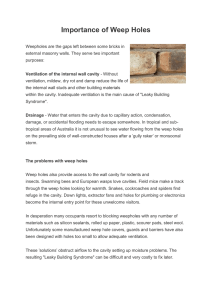
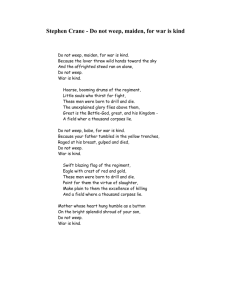
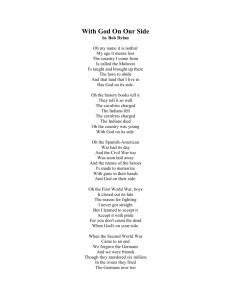
![War Is Kind [excerpt] by Stephen Crane](http://s3.studylib.net/store/data/007292208_1-bcb6282775eb864728fa7d561a15ee54-300x300.png)
